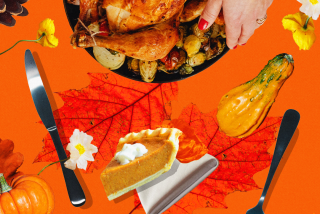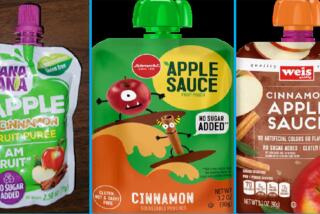What’s that teal pumpkin? Trick-or-treating can be free of allergens, calories

For parents of children with food allergies, trick-or-treating can feel like bringing home a little basket of horrors. Enter the Teal Pumpkin Project, an effort to ensure that stress-free, non-food treats are available for children who can’t partake of the standard Halloween fare.
The initiative, led by the nonprofit organization Food Allergy Research & Education, asks households offering treats to include non-edible options so that children with food restrictions can also participate in the festivities. Treating homes can signal their allergy-friendly status by displaying a teal-colored pumpkin at their home.
Food allergies occur when the body’s immune system repeatedly overreacts to certain, specific foods. The triggers vary from person to person, and the symptoms range from hives on the skin to a serious, potentially fatal restriction of the airways caused by anaphylaxis.
“Food allergies are a growing food safety and public health concern that affect an estimated 4%–6% of children in the United States,” according to the Centers for Disease Control and Prevention.
On top of that, 90% of serious allergic reactions in the U.S. are due to just eight foods (or food groups), says the CDC: milk, eggs, wheat, soy, peanuts, tree nuts, fish and crustacean shellfish. Aside from fish and shellfish, most of those other ingredients can be found in common packaged sweets.
Even if a candy’s ingredients seem allergen-free, cross-contamination can be a big issue for high-risk children. For example, a chocolate bar doesn’t contain peanuts could still have been manufactured on the same equipment as a peanut-filled candy.
It may seem like candy is the only easy option for households opening their doors to trick-or-treaters; alternatives like fruit and home-cooked treats will probably get thrown out by parents for safety concerns. But your local drugstore or dollar store may have loads of worry-free options, from glow sticks to stickers to temporary tattoos. Young children may like small packs of crayons or spider rings. Strings of beads, bracelets or bubbles are all-ages options. (You can find more ideas in this handy jack-o-lantern shaped graphic.)
In fact, such treats might be a fitting alternative not just for allergy-concerned parents, but for those who want to offer a healthier, calorie-free treat on a sugar-charged night.
If you can’t decide, remember, you can always give children a choice. One colleague recalled that her father would punch holes into pennies and let trick-or-treaters choose between his unusual tokens and the standard candy fare. Often, the more unique option won out.
And who knows? Watching what children choose might make for an impromptu Halloween behavioral science experiment -- rather like the ambitious (but fun) research that Yale professor Dean Karlan has been performing at his home for several years. During a recent Halloween, he tested Michelle Obama’s effect on kids’ candy choices. Inspired by his project, a Los Angeles-area grandmother ran a little experiment of her own, too.
Follow @aminawrite for science and health news.







